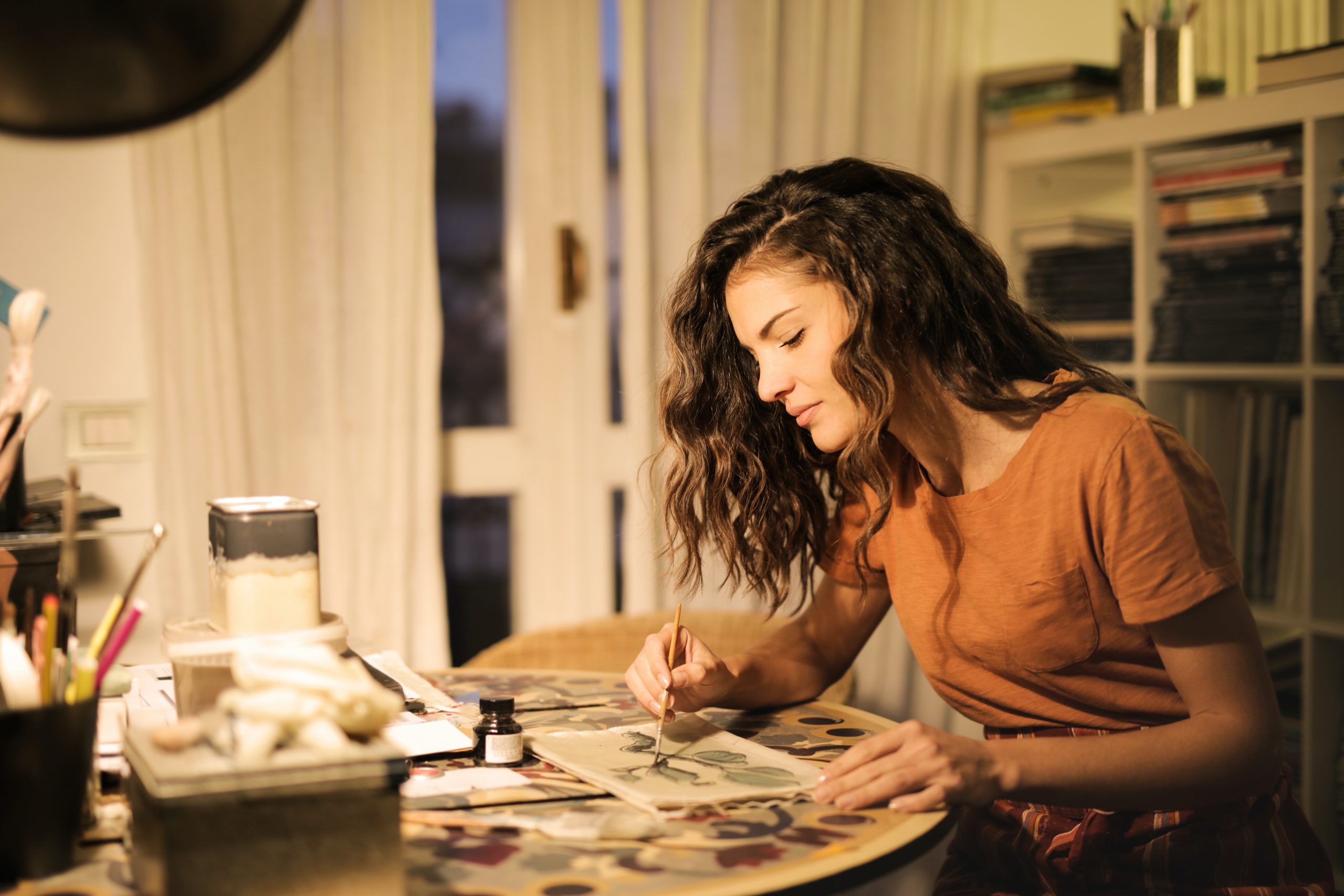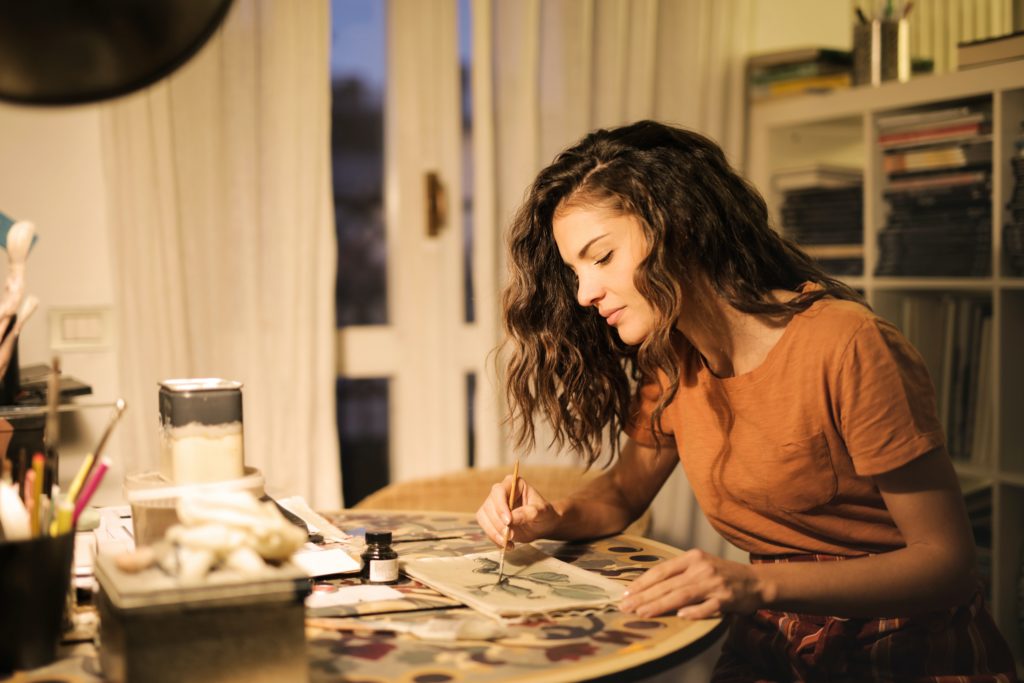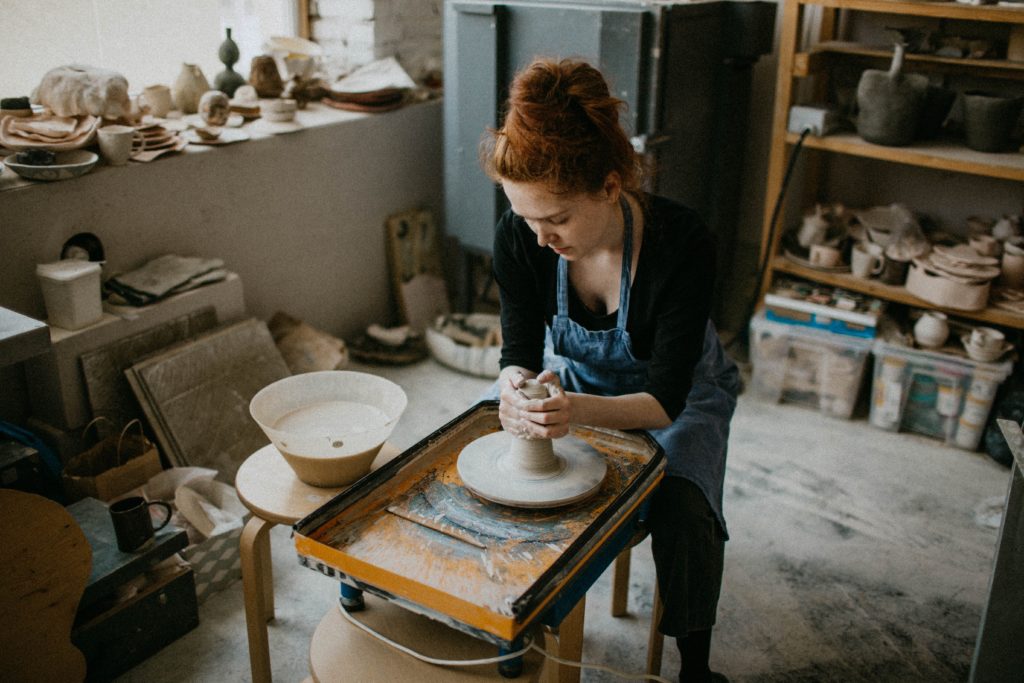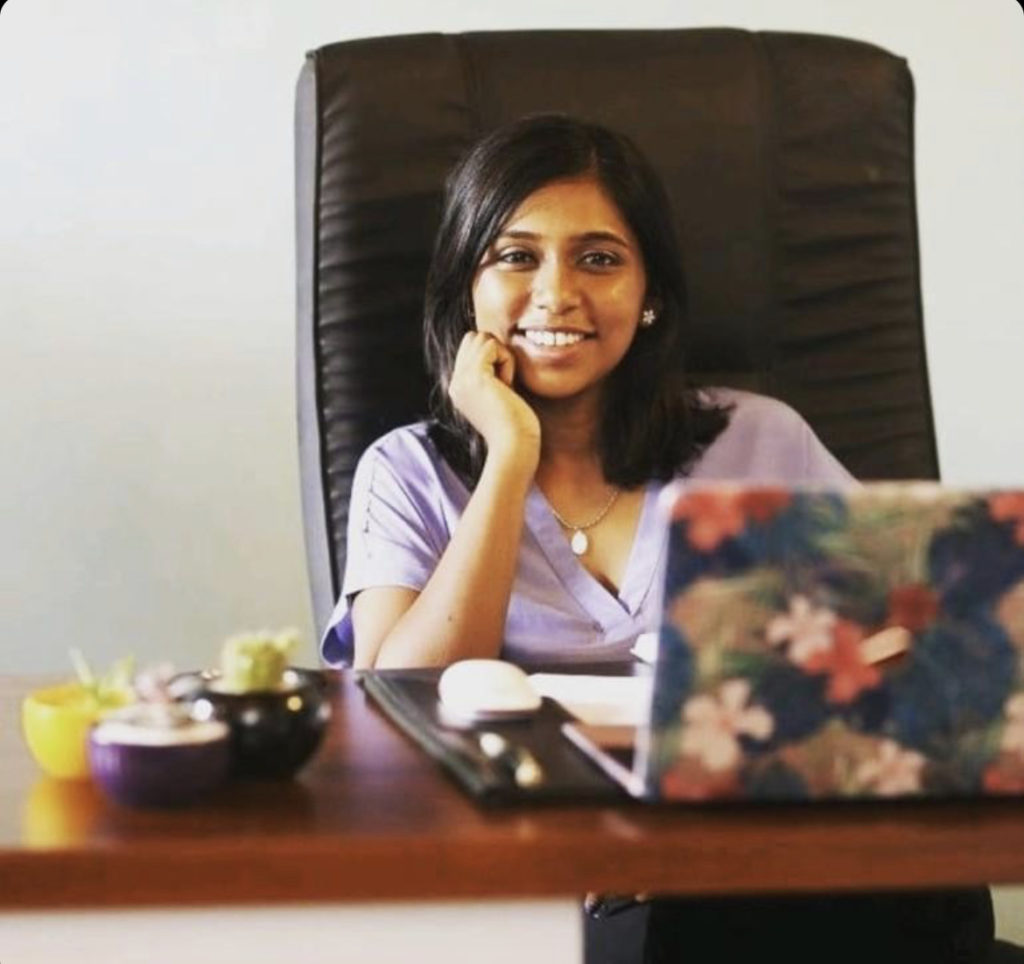categories
Entrepreneur, business coach, certified beverage goblin, mom, police wife, and lover of deep conversation & a goof glass of wine. Join me here for podcast episodes, book reports, personal essays, and helpful advice that will change the way you market your business, chase your goals, & live your life.
I'm Melissa
your best business starts with your best self- grab my free ebook & coaching series and get started today!
freebie
Your Profitable Product Business with Manjaree Gamage-Brooker

September 23, 2021
Episode 8 of the Self-Made Mamas Podcast
If you’re listening to this, chances are you’re following Self-Made Mama for marketing and business advice. My expertise lies almost entirely in service-based and digital product businesses, but I know that tons of you are in fact in the product-based business space.
I want to introduce you to my friend, Manjaree. Manjaree is a product-based business expert and CEO of Blue Diamonds Jewellery. Today we’re sitting down to talk about the difference between just making and selling products, and building a profitable, scalable, product-based business.
Melissa: Hi and welcome to the podcast. I’m so excited to have you here today. You are the CEO of Blue Diamonds Jewellery and a business coach for small businesses specifically in the product sphere.
Manjaree: Yes.
Melissa: Manjaree, you have so much great advice. You’re here today to talk about what it takes to build a high-volume, international product-based business. This is something that I have absolutely no knowledge and skillset in, and I’m so excited for you to be here today so you can share some of your wisdom. To start, maybe you could introduce yourself and share more about your current business or businesses. What your life looks like right now and how you ended up here, running a diamond jewellery factory.
Manjaree: It’s one of those things where you have a plan for your life, and then suddenly two years later you’re like, “Wow, this did not work out according to plan.” That’s not necessarily a bad thing, though. From a very young age, my family had a big family business. I live in Sri Lanka, born and raised, but lived in the UK for a few years. When I was very young, my family had a big family business. We’re involved in a lot of different industries. My father was one of those serial entrepreneurs. I always thought that I would definitely go into the family business from a very young age, and I did. During COVID I had my firstborn, and it was one of those things where suddenly I was given the space to sit down and think about what I really wanted to do. What do I really enjoy doing and what am I really good at doing? With that tiny mental and physical space during isolation, I took a step back. I was involved in a lot of different businesses. I was involved in my family’s apparel business, a big product-based business manufacturing high volumes. We do about 250,000 pieces a month and export to a few different markets. In 2016, we invested in a diamond jewellery business that had been around since 1991. When we invested in it, it was in a really, really bad state. I’m talking zero customers, huge overhead, a staff of about 20 who were really unhappy and unionized, and not very friendly towards the 24-year-old trying to tell them what to do, and making a huge loss. It had gone through this weird cycle every few years of having new management come in and a lot of the management had done some dodgy things to the accounts. You’d look at the accounts of the business and things were not adding up. It just had so much bad baggage that it took years to sift through and sort out. It had legal cases against it, loads of unpaid debt. Looking back on it, I’m kind of in awe of how I managed to get through it without having a mental breakdown because, at that time, it was a lot for a very young person. I did have extensive product-based businesses but they were up and running successful businesses by my parents. This was not up and running.
Melissa: It was a fixer-upper.
Manjaree: Yeah. It was barely running. A lot of time, energy, and tears. Now, we’re exporting to a lot of different countries, including Australia, India, Japan, the US, the Middle East. We have a new audit coming out next month. We will be at about $750,000 this last financial year on March 31st. A staff of about 38 now. We went from being able to do 60 pieces of jewellery every week, now we’re at a capacity of 900 pieces of jewellery every week.
Melissa: Wow!
Manjaree: It’s been a real transformation I’ve only noticed in the last two months. I’m only just now taking a step back and thinking, “Oh wow! We did that.” During COVID, I took a step back from the other family businesses and I made the decision to concentrate only on the jewellery business. I also wanted to do something of my own. As privileged and lucky and fortunate as I was at a very young age, I was able to be at a senior level at a business that already existed because my family ran the business. I never got the chance to be an entrepreneur on my own, by myself. That’s when I started coaching and taking my experience running product-based businesses and helping somebody on a much smaller scale. We’re in the big business realm, production-wise.
Melissa: Yeah.
Manjaree: Mass production, factory, people who are taking courses. I have a huge team that is excellent at what they do. Whereas if somebody is just starting out, that’s a lot with a product-based business. It’s not just with your laptop. There’s a lot of different moving parts.

Treat Your Business Like A Business
Manjaree: It’s really personally fulfilling to me to be able to help other women who are stepping into this world for the first time actually make a success out of it, start making money, and start building a business, instead of what I always say is essentially just a very expensive hobby.
Melissa: Yes. My favourite thing to tell people is if you want to have a successful business, you have to treat it like a business, not like a craft project. It’s not just something fun that you’re doing. Treat it like a company. That’s also what I love about your content. You have this big business, this high volume experience, these high six and seven-figure businesses. Even though the volume is not necessarily the same for someone just starting out, selling products out of their home or something, the price processes can be scaled down and the mindset needs to be the same.
Manjaree: 100%! The similarities are still there. My client who was making less than $2K a month with her product she’s working on part-time, she’s full-time being a mother as well as a full-time job. She’s got exactly the same problems that I’ve got, just at different levels. She’s like, “How do I deal with customers that ghost me?” I have to deal with the same thing. I’ve been trying to get a client online for like, three weeks now. It’s the same problem. Or she’s like, “I don’t know if my time’s making enough profit.” We’re having the same problems, it’s just different cost structures. She’s like, “My suppliers completely bailed on me.” I had the same problem last month. In India, they’ve got a huge rise in COVID cases right now and one of the regions is the region that diamonds are supplied from. We’ve got a supply problem right now, so we’re all experiencing the same problems. I’ve just got the added advantage of having dealt with these problems when my business had zero money and having to bootstrap that at a very high level. To really support them at a much smaller scale, it’s a no-brainer. I’m very comfortable doing it, and I really enjoy doing it because the wins are so much quicker. They’re immediate.
Melissa: Yeah. Absolutely.
Your Business As A Whole
Melissa: What do you want our product-based business models to know?
Manjaree: We’re all on Instagram, right? With coaching specifically, I found it difficult to find other product-based business coaches because the majority of the coaches on Instagram are service-based. I think some of the advice from service-based and product-based coaching is similar. Mindset, attitude, having that energy. What I think is important to realize is when you’re doing a product-based business, you can’t ignore the entirety of the business. Every single part of that business feeds it. I’ve got a really good freebie which I want to talk about where I show all the different areas of your business. It’s sort of a shock to a lot of my clients when they see that because they’re thinking, “Okay, I don’t even look at my administration side or take a lot of time looking at my finances. I don’t really have a schedule. I don’t even look at my customer conversions or take 15 minutes every month and look at my following from month to month.” There are so many different aspects of a product-based business. With both my clients and anyone I speak to with product-based businesses, what happens is that most people running a product-based business tend to focus on two or three things, and they only stay in that lane, because that’s what they find comfortable. Maybe they think they’re really good at Instagram and can take really great photos and get great customers through that platform. They only think about their Instagram, while they don’t really look at their profit margin or launching new products. Or they get three inquiries in a week and they’re happy. If they did a few extra things they could have had 20 inquiries.
Melissa: Yeah.
Manjaree: Okay, but that 20 inquiries, do you have the stock to manage them? Are you doing it on a pre-order basis? Are you doing custom orders? Would you be able to get that stuff out in time?
Melissa: Yeah.
Manjaree: There are so many aspects. There are a lot of moving parts. What generally happens is, when you’re running a product business, you get very overwhelmed thinking about those moving parts, and you ignore it. The thing is, if you want to grow and be stable, if you want to be consistent with it and you want to grow…and it is possible. I’ve had clients do that. I had a client who made these super customized, gorgeous, handmade plushy rag dolls. The most sales she’d ever done were five. Once we started working together, she really sorted out her production and time management issues, her sales mindset, and she had a good, consistent sales strategy. She did 35 in a week.
Melissa: Wow!
Manjaree: She had to stop taking orders because she had more inquiries than she could complete. Which is a great problem to have!
Melissa: Yeah! That’s a great problem!
Manjaree: I said, “Okay, how do we work from that?” Now she’s getting help in, so she’s gone from “I’m a mother at home making something in my spare time” to “this is a business. I’m going to hire a team and outsource my accounts.” Now it’s becoming a business that is growing and scaling. She’s now looking into doing export, which is serving a new market.
Melissa: Now she’s an entrepreneur.
Manjaree: She’s an actual entrepreneur.

Working Moms
Manjaree: I think that was actually one of my favourite clients because she said she got a letter from her daughter’s school that asked, “What do you do?” or “What’s your position?” She said, “I put ‘CEO’ and I’ve never done that before.”
Melissa: Yes! I love that.
Manjaree: She said, “I never would have called myself that before.” If people asked her, she would say “Oh, I don’t really do anything, I’m a stay-at-home mom,” even though she’s doing something. Being able to support someone doing that means everything to me because we get so lost in it, right? We get lost in these roles, especially being a parent, we get really lost in that role. We have the tendency to define ourselves and introduce ourselves by that role when we’re multi-faceted people.
Melissa: I think this is less the case before you have children, but once we become mothers, I think other people tend to define you that way, too. I have never been to Sri Lanka, I can’t speak to the culture there, but I know it’s still very prevalent in North America. People will assume it’s the majority of your identity. Even now, I have people say to me things like, “How is your little business thing going? How’s your stuff going?” I get comments like that and they’re not poorly intentioned, but the subtext is “Well, you’re parenting, so how is the stuff that you do when you’re not parenting going?” What you’re doing is empowering women. By giving them the structure and systems to treat a business like a business, is incredibly empowering. I love the CEO story. I love that she put that on the form.
Manjaree: You hit the nail right on the head. I have a mix of about 60-70% of clients based here and then the rest are international, mostly the UK and 1 or 2 US clients for the business coaching. It’s one of those things, especially here, that almost all my clients never imagined they would be making enough money in their business to make a sizable contribution to the family income. The ones who are mothers and who are stay-at-home moms. It was a shock to them. I have one client whose husband has never taken the business seriously and it’s not because they have a bad relationship or anything. he just sees himself as the breadwinner. It’s like her business is something she does in her free time, just for kicks. During COVID, when it got quite bad here, his company forced him to go on a salary strike. Suddenly their entire relationship changed because at one point she was like, “Do you realize my cute little business is paying for everything?” It was a wake-up call for him that she was contributing that much. Even she took a step back and recognized that she was a serious financial contributor to the family. It’s so empowering and it’s not just about the money, it’s about feeling like you are having an impact. I have this application form that asks, “Why? What would this mean for you?” Almost all my clients, the ones who are moms, say, “It would mean being able to support my children financially.” It’s such a core belief, being able to support them financially and even just in a small way paying for their school or something. They would like to be the ones to do that instead of relying on their husbands. It may seem like such a small thing, but especially in this part of the world, education is the magic key to unlocking a better life for yourself. That’s all we mothers have ever wanted to do is give our kids a better life. If we can do this from home and doing something we love, I mean it’s a no-brainer.
Melissa: That’s the dream! That’s why we’re here!
Manjaree: Yeah, and making something from our hands. A lot of my clients literally make things out of their hands. They are using their talent and selling it. It’s something easy, it comes very easily to them. They can make gorgeous, amazing, wonderful, fantastic things, selling them sustainably and making a profit. That’s what the trick is.
Profitable Product-Based Business
Melissa: That was my next question for you. I have a lot of incredibly talented friends who handmake things, whether it’s clothing or cosmetics or skincare, whatever it is. When product-based businesses come to me, and I usually refer to other places like you, the immediate glaring problem I usually see is profitability. They haven’t structured their business to have healthy margins. What is your take on that? What’s your biggest advice to women who are starting businesses like this? Let’s say they’re just getting going, or maybe they’ve been selling their goods but aren’t incredibly profitable. There’s often very strong resistance to raising prices. What is your approach to this? It’s not the same as services, right? With products, there is sort of a market cap for how much you can sell something for. The market can only take so much within a price range. Whereas with digital services, people can sell things they just come up with in their heads for astronomical amounts of money. There really is no limit. Products are not like that. What’s your advice to someone who is struggling to be profitable or to structure themselves to be profitable?
Manjaree: A few things. You’re 100% right, this is the number one issue. So many people, when they’re doing products, sell too cheaply. You end up investing a lot of money in the raw materials, building up stock, and then you realize that you’ve put so much money into it but you’re not making enough profit. One thing I always say for a product-based business is that you cannot be afraid to look at the numbers. That’s the biggest thing a lot of them avoid as well. When you’re service-based, you should only be dealing with a few numbers coming in. You don’t have a ton of expenses. When you’re product-based, you have a lot of expenses. Your transport, your raw materials, all the normal things as well like website, market cost, photography for gorgeous product photos to sell. There’s a lot of costs. A lot of business owners are very scared to look at the numbers because they’re scared to know if they’re making a loss. My biggest advice is to get comfortable with the numbers. Instead of being afraid of it, instead, let it empower you to make better decisions. Knowing the numbers intimately is what is going to help to know when you need to raise your prices or increase how much you’re buying so you can get a bulk discount or supply so the cost of your raw materials is lower. Or you need to sell faster to make more profit in a certain month. That’s another thing a lot of product-based businesses ignore. If they’re making something that should be kept in stock, an inventory, they don’t think about inventory holding costs. They think that if they didn’t sell much this month, it doesn’t matter and they’ll just sell more next month. No! You’ve got fixed costs. They drag on every month. That’s going to eat into your profit margin. Getting really comfortable with the numbers will empower you to make complex decisions about what you need to do. The other thing I would say, aside from getting comfortable with the numbers that you’re dealing with at the moment, is you need to have accounting systems. You need to have accounts. It doesn’t need to be complicated, you don’t need to get an accountant. You don’t need fancy software or QuickBooks if you can do it on Excel. Instead of only looking at what your current numbers are in and out of the business, like how much you’re selling, how much your expenses are, cost, all that, is to make a projection. You need to be forward-looking. Otherwise, you’re just doing a post-mortem. To make a projection, instead of only looking at what’s happening right now, you want to know what could happen, and run a few test scenarios like, “What if I did this? What if this happened? If I sell this many pieces this month, I make this much profit.” or “If I sell on to other parties, aside from selling on my own, I could increase my chances of doubling or tripling my revenue by this much.”
Melissa: That’s amazing advice, and we do that in the services industry as well, too. A lot of people talk about visualization, goal setting, target setting, there are so many different ways to describe it. With a product-based business it’s even more important because, especially if you are the one making the goods, you’re going to burn out if your sales volume stays low.
Manjaree: Yes, and they don’t take that into account.
Melissa: No. I think a lot of people start out with a passion for their craft, but passion doesn’t actually sustain you the way that we like to say it does in pretty little memes and things like that. Profit sustains you.
Manjaree: 100%. It’s incredible, almost everyone has the same journey. You start out doing it for fun, and then put a photo up on social media and somebody said, “This is really cool! How much is this?” Then you realize someone wants to buy it and you can make money from it, so you set up an Instagram and get some inquiries and make some sales. Six months later, it’s the same people buying from you and you’re still selling the same thing. Sometimes you’re staying up all night to make something, you’re giving random discounts. It’s not sustainable. Maybe you started out thinking you really enjoyed it, but why are you continuing to do it if you’re not making money? If it’s not giving you the time you want to have, or financial freedom, why are you continuing to do it as a business? It’s completely fine to do something as a hobby. You don’t have to call it a business.

Scaling Up
Melissa: Take us in a bit of a different direction. Let’s say somebody is currently handmaking things themselves, or bringing in stock in small volumes, and they want to take things to the next level. Maybe they want to start having things manufactured at the factory level or want to look at having things manufactured overseas if they’re based in North America, for example. What would be your advice to somebody who’s ready to scale up? They have a profitable small-scale business, and they’re ready to take it bigger and get it to the level that, for example, your diamond business is at.
Manjaree: First, you have to let go of the fear that you have to do everything yourself. Especially product-based businesses because you’re so used to making everything on your own. You have this inherent fear of handing off anything, especially your product because your product is like your baby. It’s a very scary idea to hand it over to someone else. It depends where you are in the world, but there are a lot of different marketplaces, like supplier platforms, available now. You can just go on there and say, “I’m looking for someone to make this for me,” and you have the opportunity to have suppliers literally reach out to you and offer to make your product at their price. If doing that feels a little daunting, a really good tip I have is to look where your competition is. A lot of times, because especially it’s product-based, people like to know where something is coming from. Even your competitors that are making products, if they’re doing it at a larger scale than you, there will probably be something on their website or Instagram or whatever where they say where they’re getting stuff made from. That’ll be a good indicator to you that you know it is possible to scale up. The other thing is to look at your process of making something. Break it down. You don’t necessarily have to outsource the entire production of your product. What can you make easier for yourself? What can you buy in bulk, for example? Let’s say you’re making clothes, right? What can you get made before it comes to you to do the customization or the final touches? There are factories and places all over the world, even probably in your own backyard, that can make what you’re making at a lesser price. You just have to do your homework. Let go of the fear of handing it over, and be prepared to invest in it because the only way it’s going to make sense is if you put enough money behind it to get it at a cheaper price. Or else you’re going to meet that mental resistance of, “but I could just do it myself.”
Melissa: I think that’s amazing advice. This is so outside of my area of expertise, it’s so interesting.
Manjaree: Take Blue Diamonds, for example. At one point we were overwhelmed with orders. My factory staff were working nights and weekends in order to get the product out correctly to one of our customers. We had this meeting where my factory head was essentially having a panic attack because he was so worried they couldn’t hit the deadline. I just had to say, “Let’s just hold on for a second, let’s take a step back, what can we outsource?” He was terrified to outsource because what if it didn’t come back at the correct product quality? This is high-end stuff. However, if you take an earring, we managed to outsource the back of the earring, the hook, as well as the stem of the earring. Those pieces take an incredible amount of time from my team but aren’t necessarily a very important part of the piece of jewellery. That’s not where our value add is. I thought we could outsource this to someone because it’s not hugely important, it’s a standard quality item, and just doing that saved us hours of time. It’s a little more expensive but when you look at it at face value, yes we can do it cheaper, but we couldn’t because our time had to go to other things.
Melissa: Yeah.
Manjaree: It’s a scary decision but it’s a decision that ultimately allows me to get the order out on time. It took resources but it needed to get done.
Melissa: That’s amazing advice. You do fantastic work and you obviously know your shit. This has been so interesting, thank you so much for your time.
Manjaree: Thank you for yours!

Find Manjaree on Instagram at @manjareeGB where she shares pictures of her toddler and behind the scenes of her jewellery business @bluediamondsjewellery.
Manjaree is also a business coaching for product-based business owners.
Check out her freebie, The CEO Health Check, and get in touch with her for all your product-based business support.
Action Items
A. If you want to have a successful business, you have to treat it like a business, not like a craft project. It’s not just something fun that you’re doing, it’s something you want to make a real profit from. Treat it like a company.
B. Pay attention to the entirety of your business. There may be two or three parts of your business you feel like you really excel at, but you can’t ignore the others. Drilling down into every aspect of your business and outsourcing things if necessary is how your business will be stable and grow.
C. Don’t be afraid to look at the numbers.
-
- Product-based businesses have more expenses than service-based businesses. Get really familiar with all of the numbers of your business and look at them regularly. Transport costs, raw materials, website, markets, photography, storage, etc.
- Have accounting systems. They don’t have to be fancy or expensive, but they need to do the job so you can always see your accounts and numbers.
- Instead of only looking at the numbers going in and out of your business, start making projections and tweaking outcomes based on changes you could make now.
D. When you’ve reached the capacity of what you can produce on your own, it’s time to let go of the fear that you have to do everything yourself and start scaling.
-
- Look up online marketplaces and supplier platforms where you can post your product and get offers for suppliers to make it for you at their cost.
- Check out what your competition is doing. Where are their products being made? If they’ve scaled up, you probably can, too.
- If it feels overwhelming, break it down. You don’t have to outsource the entire production of your product. Outsource whatever makes it easier for you, whatever is the least customized or doesn’t have your personal touch on it.
- Be prepared to invest in this at the forefront because the only way this will make financial sense is if you put enough money behind it to get it at a cheaper price (think bulk orders).
Thank you so much for joining me for this episode of the Self-Made Mamas Podcast. You can find more information about working with us at theselfmademama.com or connect with us on Instagram at @selfmademama_. I can’t wait to chat.
Leave a Reply Cancel reply
categories
Entrepreneur, business coach, certified beverage goblin, mom, police wife, and lover of deep conversation & a goof glass of wine. Join me here for podcast episodes, book reports, personal essays, and helpful advice that will change the way you market your business, chase your goals, & live your life.